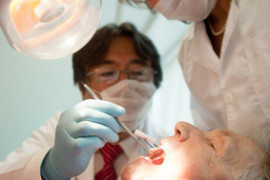A wealth of recent evidence has linked pathogens of oral origin to specific types of cancer. P. gingivalis specifically has been considerably linked to several forms of orodigestive cancer, and it has even been suggested that it increases the aggressiveness of oral squamous cell carcinoma by helping the cancer cells resist treatment.
In a recent study published in the journal Infectious Agents and Cancer, researchers examined esophageal tissues from esophageal squamous cell carcinoma (ESCC) patients for the presence of P. gingivalis in an effort to better understand the relationship between P. gingivalis infection and the diagnosis and prognosis of ESCC.
Researchers found P. gingivalis in 61% of cancerous tissues and 12% of surrounding tissues—the bacterium was not detected in normal samples. Researchers concluded that P. gingivalis infection was significantly associated with the spread of cancer and overall survival rate.
The American Cancer Society estimates that nearly 17,000 new cases of esophageal cancer were diagnosed in 2015. This type of cancer, which claimed more than 15,000 lives last year, is three to four times more common in men than in women.
These findings are, therefore, clinically significant:
“These findings demonstrate for the first time that P. gingivalis infects the epithelium of the esophagus in esophageal squamous cell carcinoma patients, leading researchers to believe that it may be a good biomarker. More importantly, it suggests that eradication of this common oral pathogen may reduce the overall burden of this deadly disease.”
It has been well established that addressing periodontal pathogens can play a key role in reducing risk for cardiovascular disease, Alzheimer’s disease, diabetes, and many other conditions that impact health, costs, and quality of life. That an anti-microbial approach to periodontal disease might also be a non-invasive way to aid in the prevention and early detection of esophageal cancer is an important milestone in the oral-systemic health movement.



